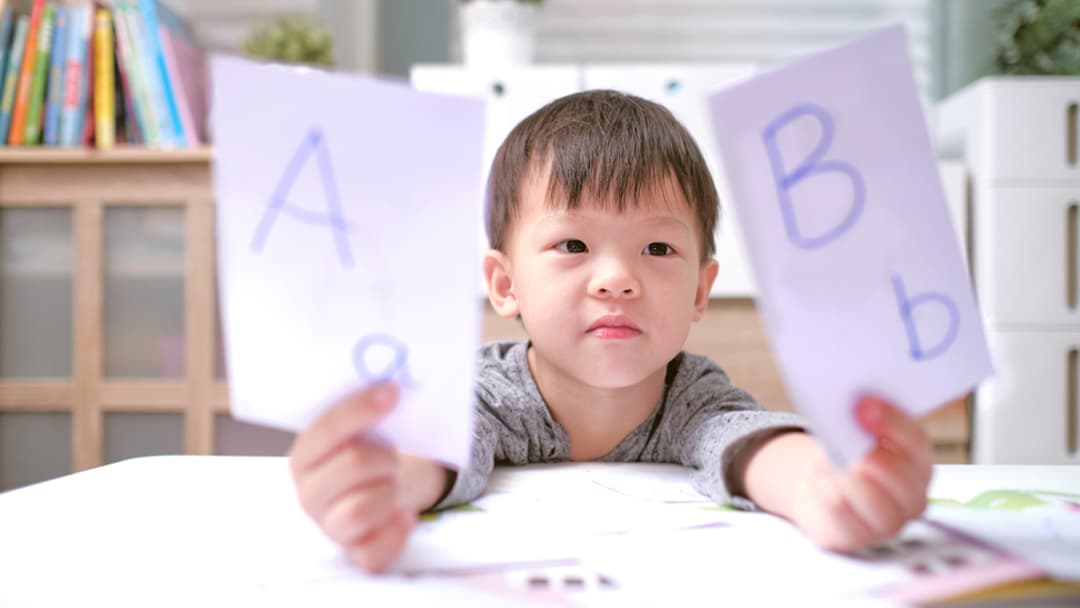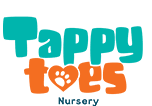
The 6 Stages of Language Development in Children
Language development starts when a child is born and continues to develop. However, the first five years are crucial for acquiring a child’s speech and language abilities. During this period, a child’s brain is primed for rapid growth, and their communication skills expand astonishingly.
As parents and caregivers, knowing the typical developmental stages can help us identify any potential delays early on. Understanding what to expect allows us to better support our children’s language progression through encouraging interaction and providing language-rich environments.
At Tappy Toes Nursery, we understand the importance of language development in early childhood. That’s why we’re dedicated to supporting children through the various stages of language development. In this post, we’ll explore those stages and what you can expect as your child progresses from babbling to their first words to communicating complete sentences.
Stages of Language Development
Language development can be divided into several main stages as children advance from simple communication to mastering complex grammar and vocabulary. Here’s an overview of what occurs in each phase:
Birth to 3 Months: Pre-Speech Stage
Babies communicate through crying, eye contact, facial expressions, and body movements in the first few months of life. They also begin cooing and making gurgling sounds in response to human interaction.
Key milestones
- Makes sucking noises
- Coos and vocalises pleasure
- Cries to signal needs
- Smiles in response to human faces and voices
As caregivers, we encourage pre-speech development through talking, singing and reading to babies from day one. This interaction helps build early communication skills.
3 to 6 Months: Babbling
Babies become more vocal in the babbling stage. They discover and play with sounds by stringing consonant and vowel combinations together, such as “ba-ba” or “da-da”. It’s their first step in understanding phonological awareness, which is how we recognise and produce sounds in speech.
While it may sound like real words, babbling lacks meaning at this phase. However, it allows infants to practice making speech sounds in preparation for language. Babbling lays the foundation for imitation and taking turns in conversation.
Key milestones
- Babbles with long strings of sounds like “bababamama.”
- Uses different pitches and emotions in babbling
- Begins to imitate some sounds
- Responds to own name
- Uses sounds or gestures to interact with others, e.g. laughing and vocalising
6 to 12 Months: First Words
Around their first birthday, babies speak their first words. These are initially basic nouns like “mama”, “dada” and “baba”.
Early words often relate to daily routines, family members and familiar objects. Understanding precedes expression, so babies may respond to words before they can say them.
Key milestones
- Says first words like “mama” and “baba”
- Points or gestures to objects when named
- Experiments with imitating words
- Begins to follow simple commands and instructions
- Names a few familiar objects
- May engage in simple back-and-forth babble conversations
At Tappy Toes, we promote word learning by naming objects, actions and concepts as we engage with children in play and caregiving. We also sing songs and read books that expose children to new vocabulary.
12 to 24 Months: Language Explosion
After speaking those first precious words, a child’s vocabulary rapidly takes off. They combine two words to form phrases like “Daddy bye” or “more juice”.
By 24 months, little ones are starting to speak in 2-4 word sentences and have a vocabulary of around 50 words. Comprehension likewise expanded dramatically during this time.
Key milestones
- Combines two words into short phrases
- Vocabulary jumps to around 50 words
- Asks questions using words like “what”, “why” and “where.”
- Follows two-step directions (“Get the book and put it on the table”)
- Engages in short back-and-forth conversations
- Learns new words at a rapid pace
24 to 36 Months: Complex Speech
A child’s language progresses in leaps and bounds between two and three years old. Sentences become longer and more complex. Vocabulary expands rapidly to around 300 words. Conversations start to include descriptions of past and future events.
Key milestones
- Combines 3-4 words in sentences (“Daddy go to work”)
- Asks lots of questions
- Vocabulary grows to 300+ words
- Uses pronouns like “me”, “mine”, and “you.”
- Begins using some plurals, prepositions and tense markers
- Enjoys rhyming and silly language games
- Has conversations of 3-4 turns
We provide opportunities for more advanced communication through activities like show-and-tell, dramatic play and group discussions. Books and stories also expose children to richer vocabulary and language structures.
3 to 5 Years: Grammar and Sentences
Between three and five years old, children gain mastery over grammar rules and sentence structure. They transition from speaking in short sentences to longer, more detailed sentences using grammar elements like conjunctions and prepositions. Complex language abilities like telling imaginative stories, joking and understanding metaphors emerge.
Key milestones
- Speaks in 4-6 word sentences
- Uses past tense, plurals, prepositions and subject-verb agreement
- Tells short stories, shares ideas and opinions
- Asks lots of “why” and “how” questions
- Carries on extended conversations
- Learns around five new words per day
- Develops clear speech intelligibility
We provide preschoolers ample opportunities for conversation, imaginative play and exposure to new words. This allows them to practice applying their blossoming language skills. While every child develops differently, this general timeline provides an overview of the major speech and language milestones from birth through age 5.
Promoting Language Development
 As parents and caregivers, there are many ways we can nurture our child’s language progression at each stage:
As parents and caregivers, there are many ways we can nurture our child’s language progression at each stage:
- Maintain warm, responsive face-to-face interactions from day one. This builds early communication.
- Read, sing and talk to babies and infants – they absorb language through caring interaction.
- Respond to your baby’s coos and babbles. Have back-and-forth vocal exchanges.
- Use gestures like pointing, showing and waving. These are early forms of communication.
- Name objects, actions and concepts as you play and care for your child.
- Limit screen time, which reduces critical language interactions.
- Expand on your child’s words – repeat what they say and add another word.
- Ask open-ended questions and listen attentively to develop conversation skills.
- Provide books, songs, rhymes and stories to expose children to rich language.
- Address any delays promptly through consultation with a pediatrician or speech pathologist.
The magic of language unfolds rapidly in the first few years of life. It’s an incredible journey to witness. Understanding the stages empowers us to support children through this critical developmental window best.
Identifying Delays and Speech Disorders
Children have unique personalities, but their language development pace can also vary. Some might face language delays, while others might experience speech disorders. Recognising these early on can make a world of difference. Speech and language therapy can be invaluable in these instances. A speech and language assessment might be recommended if parents or caregivers suspect language problems.
Final Thoughts
Understanding the stages of language development helps us appreciate every new word, sentence, and question a child asks. From babbling to storytelling, it’s a magical journey. We can ensure that every child thrives in their language and speech development journey with the right support, whether through early childhood speech therapy or engaging in meaningful conversations.
At Tappy Toes Nursery, we are passionate about early language development and take a developmental approach to caring for children. Our staff understand the importance of speech and language milestones and create a nurturing environment focused on promoting communication skills through play, stories, songs and quality interaction.

